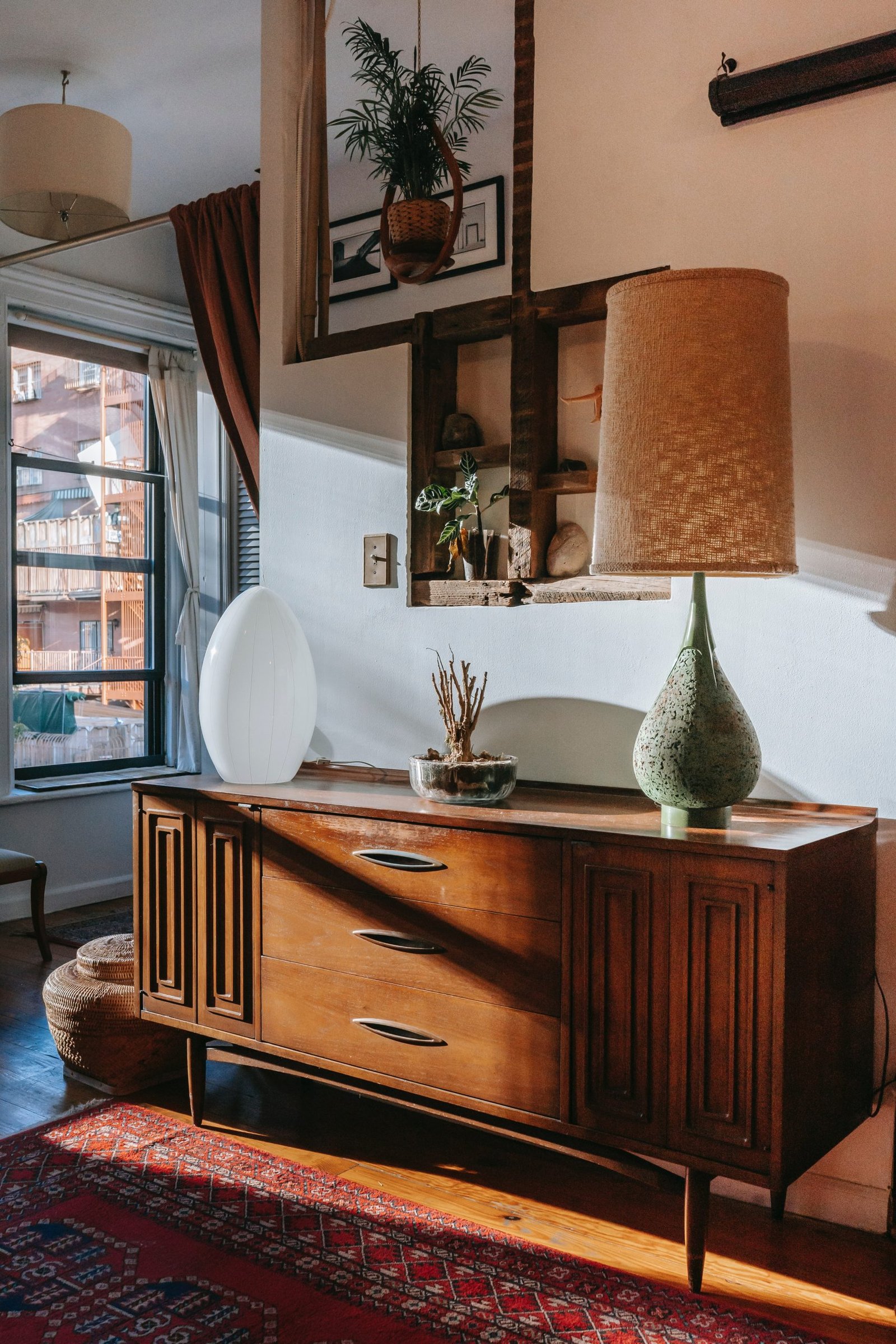When we think of Art Deco, we immediately think of the bold geometric shapes, the glamour of the Roaring Twenties and the sophisticated aestheticism that defined the post-First World War era. This period, from the 1920s to the 1930s, saw the emergence of many marvels of design and architecture. Among these treasures, sideboards in precious wood marquetry occupy a special place.
Art Deco: a time of renewal After the tragedy of the First World War, the world yearned for a break with the past, looking towards a future full of hope and novelty. It was against this backdrop that Art Deco was born, with its penchant for modernity, elegance and symmetry. Designs were inspired by both classic forms and new trends, fusing styles and playing with a variety of materials.
Precious wood marquetry: an age-old technique revisited Marquetry, a technique dating back to the Middle Ages, involves assembling different types of wood to create a pattern or picture. During the Art Deco period, this technique was revisited, showcasing rare and exotic woods such as ebony, rosewood and amaranth. The motifs were often geometric, reflecting the aestheticism of the period, but sometimes inspired by nature or distant cultures.
Art Deco sideboards from 1910: a fusion of functionality and aestheticism The buffets of this period were not just utilitarian objects for storing crockery or knick-knacks. They were real centrepieces in interiors, reflecting the taste and status of their owners. Their elegant design, often embellished with brass or chrome details, and their delicate marquetry, made them objects of admiration.
The legacy of art deco buffets Today, these sideboards are sought-after pieces by collectors and art lovers alike. They recall an era when attention to detail, craftsmanship and a passion for beauty were at the heart of creation.
In conclusion, the precious wood marquetry sideboards of the 1930s reflect an effervescent period in the history of design. They are a testament to the ingenuity and creativity of the craftsmen of the time, combining tradition and modernity. These pieces are much more than mere pieces of furniture; they are works of art that continue to fascinate and inspire. You can buy them at many auctions, such as this one 1930s buffet estimated at between €4,000 and €5,000.

No responses yet